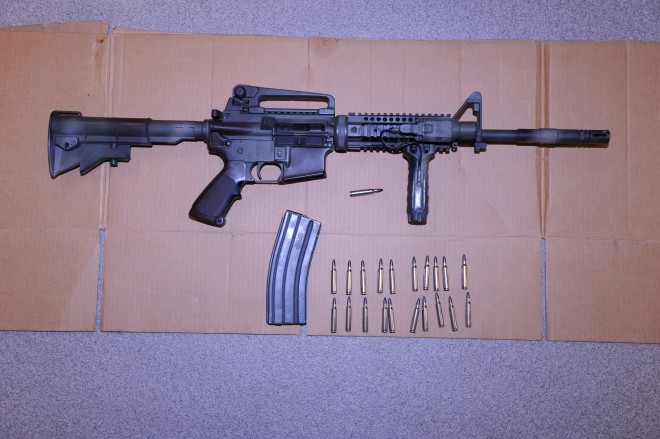
Jackson inquest jury calls death a homicide, requests IIO
September 20, 2011 in Opinion

Cst. Lofroth's M-16 and rounds remaining after firing eight bullets at Rodney Jackson
The coroner’s inquest into the 2009 RCMP shooting death of Rodney Shayne Jackson concluded late Friday evening with the jury classifying the death as a homicide and making 13 recommendations, including a recommendation to the BC government that “the independent investigation office be implemented in an expeditious manner.”
It can be reasonably inferred from that recommendation that the jury believed that the RCMP investigation of the RCMP shooting was flawed.
The jury heard that the ERT operation followed an exchange of e-mails in which a junior New Hazelton RCMP member said, “Let’s get an ops plan in action to get this guy before winter hits. ERT, helicopter all the fun stuff.” His superior responded, “please do up a general profile of JACKSON to include all of his offences he is being charged, number of warrants, flags and our input as to the danger this sus poses (ie. proficiency out in the bush, with firearms, cop hater, record of violence, etc etc.)” According to the criminal record submitted as evidence at the inquest, Mr. Jackson’s last prior conviction was a conviction for breaching a recognizance eight years earlier.
Seven members of an RCMP ERT (Emergency Response Team) mobilized at 4:30 a.m. on September 26, 2009 to apprehend Mr. Jackson on some old outstanding warrants. They put on camouflage fatigues and face paint, and, each armed with a sidearm and an M-16 assault rifle like the one depicted above, covertly crept into the Kisgegas fishing village where Mr. Jackson was residing. Cst. Bruce Lofroth, the ERT leader, fired eight rounds at Mr. Jackson when he emerged from his cabin to see why his dogs were barking. The fatal shot struck him in his back. Mr. Jackson was probably holding his old Lee-Enfield .303 in one hand, which he invariably carried with him because he was in grizzly bear country, but it was recovered unfired and with the safety on.
The RCMP investigators did not interview any of the seven ERT members or separate them, steps that would have been fundamental to any competent investigation. Cst. Lofroth consulted a lawyer and submitted a brief typewritten explanation for his actions on November 16, 2009, some six weeks after the fatal shooting.
The RCMP nonetheless immediately determined the shooting was justified and made no report to Crown Counsel.







 Follow this site using RSS
Follow this site using RSS

